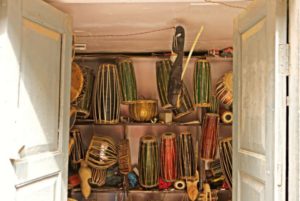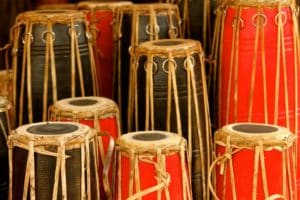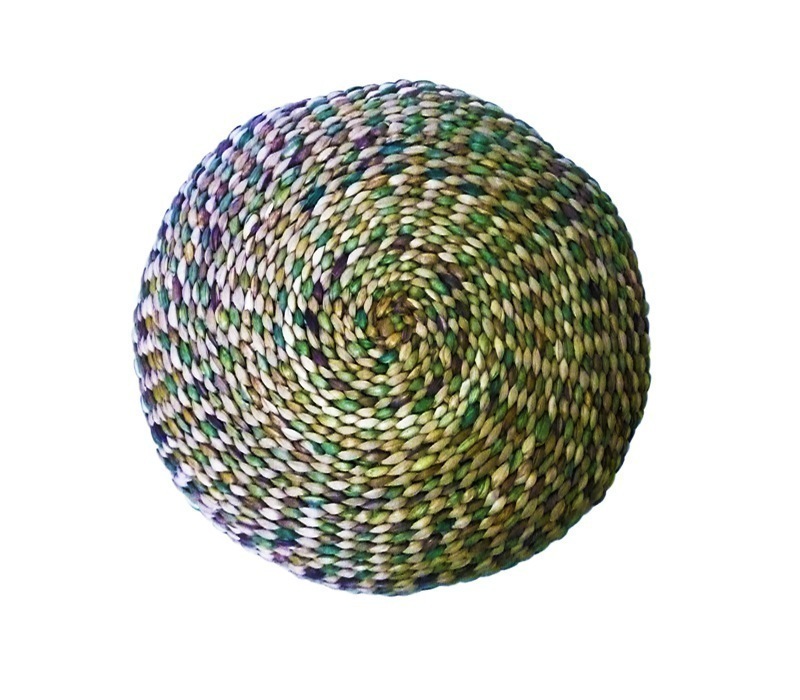Introduction:
In the enchanting realm of Nepali music, there exists an instrument that serves as the rhythmic heartbeat of the nation: the Madal. This ancient percussion instrument, deeply rooted in Nepal’s cultural and spiritual heritage, holds a special place in the hearts of its people. In this article, we will explore the history, craftsmanship, musical significance, and enduring appeal of the Madal in the rich tapestry of Nepal’s musical traditions.

History and Origin:
The Madal’s history in Nepal can be traced back centuries, possibly even to the time of the Malla dynasty. It has witnessed the rise and fall of empires, the changing tides of culture, and the evolving face of music in Nepal. The instrument’s roots are intertwined with Nepal’s folk and classical traditions, making it an indispensable part of the country’s musical identity.

Craftsmanship and Design:
At the heart of the Madal’s allure lies its craftsmanship. Meticulously handcrafted by skilled artisans, the Madal is created from a single piece of wood, usually from the jackfruit tree. Its hourglass shape and two distinct playing surfaces, known as “mukh” (mouths), allow for a versatile range of sounds. The skin of the instrument, often made from goat or buffalo hide, is stretched tightly over the mouths, producing resonant tones.

The Musical Significance of the Madal:
The Madal’s rhythmic prowess is felt across various musical genres in Nepal. It serves as the backbone of traditional Nepali folk songs and dances, enhancing the energy and spirit of celebrations and festivals. Moreover, it plays an integral role in classical music, accompanying traditional instruments like the sarangi and bansuri. The Madal’s versatile beats can evoke a range of emotions, from joyous festivities to contemplative moments.

Madal in Rituals and Spirituality:
Beyond its role in entertainment, the Madal holds deep spiritual significance. It is often used in religious ceremonies, rituals, and meditation practices, connecting people to their cultural and spiritual roots. The rhythmic vibrations of the Madal are believed to transcend the material world, guiding individuals on a spiritual journey.

Challenges and Preservation Efforts:
In an ever-evolving world, the Madal faces challenges such as modernization and a shift in musical tastes. However, dedicated individuals and organizations are working tirelessly to preserve and promote this cultural treasure. Madal workshops, educational programs, and cultural events aim to pass on the knowledge and skills necessary to keep the Madal’s legacy alive.
Conclusion: The Timeless Beat of Nepal
The Madal, with its ancient history, intricate craftsmanship, and profound musical significance, remains an enduring symbol of Nepal’s culture and spirit. As it continues to resonate through the valleys and hills of Nepal, it reminds us of the power of music to connect people across time and space. In the Madal’s rhythmic beats, we find the heartbeat of Nepal, pulsing with the essence of a nation’s soul.






